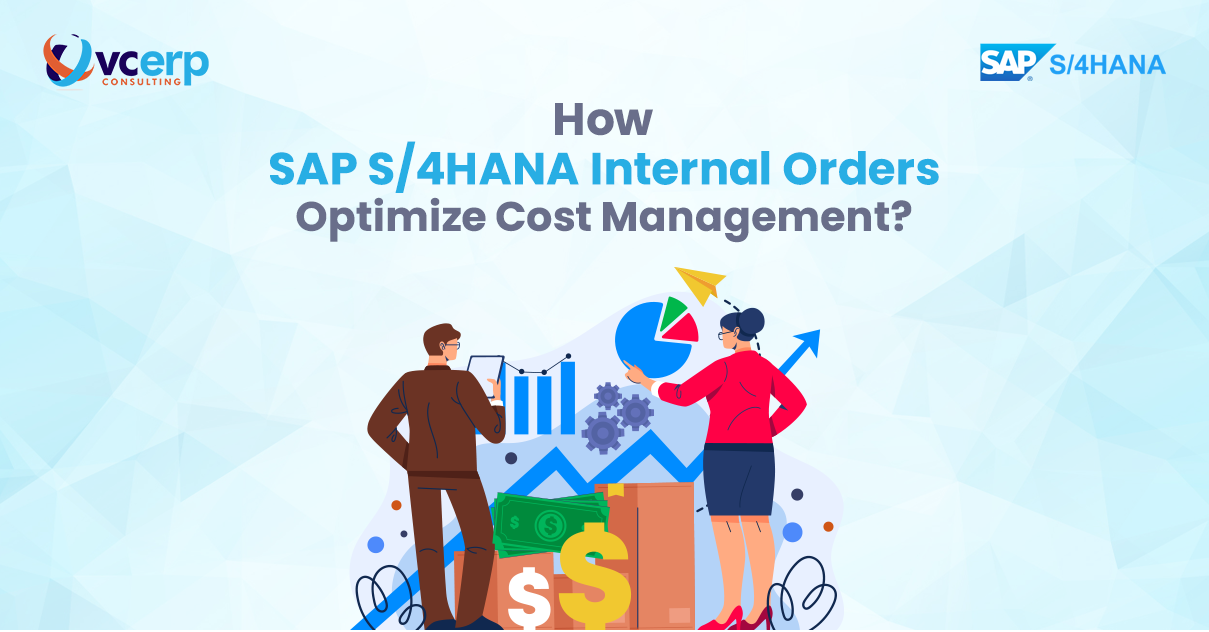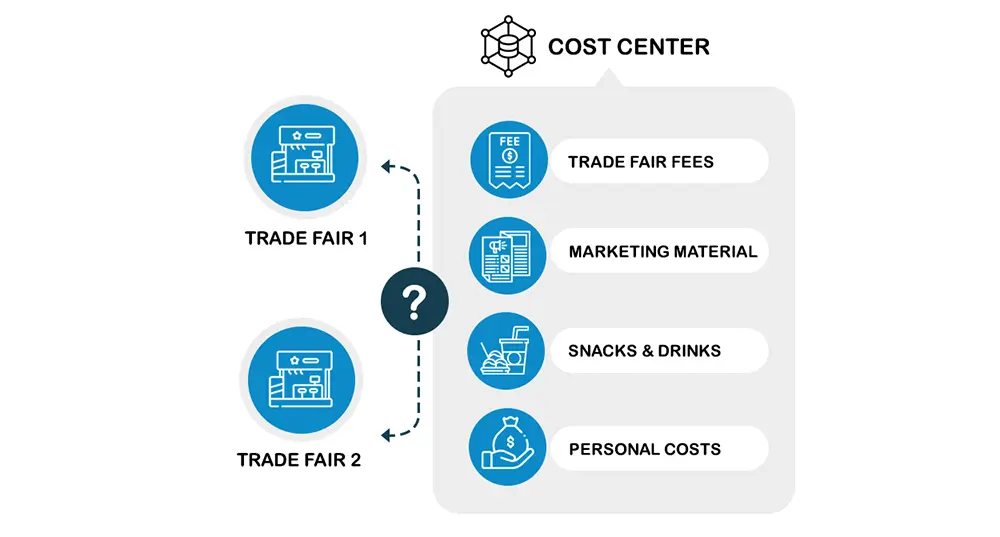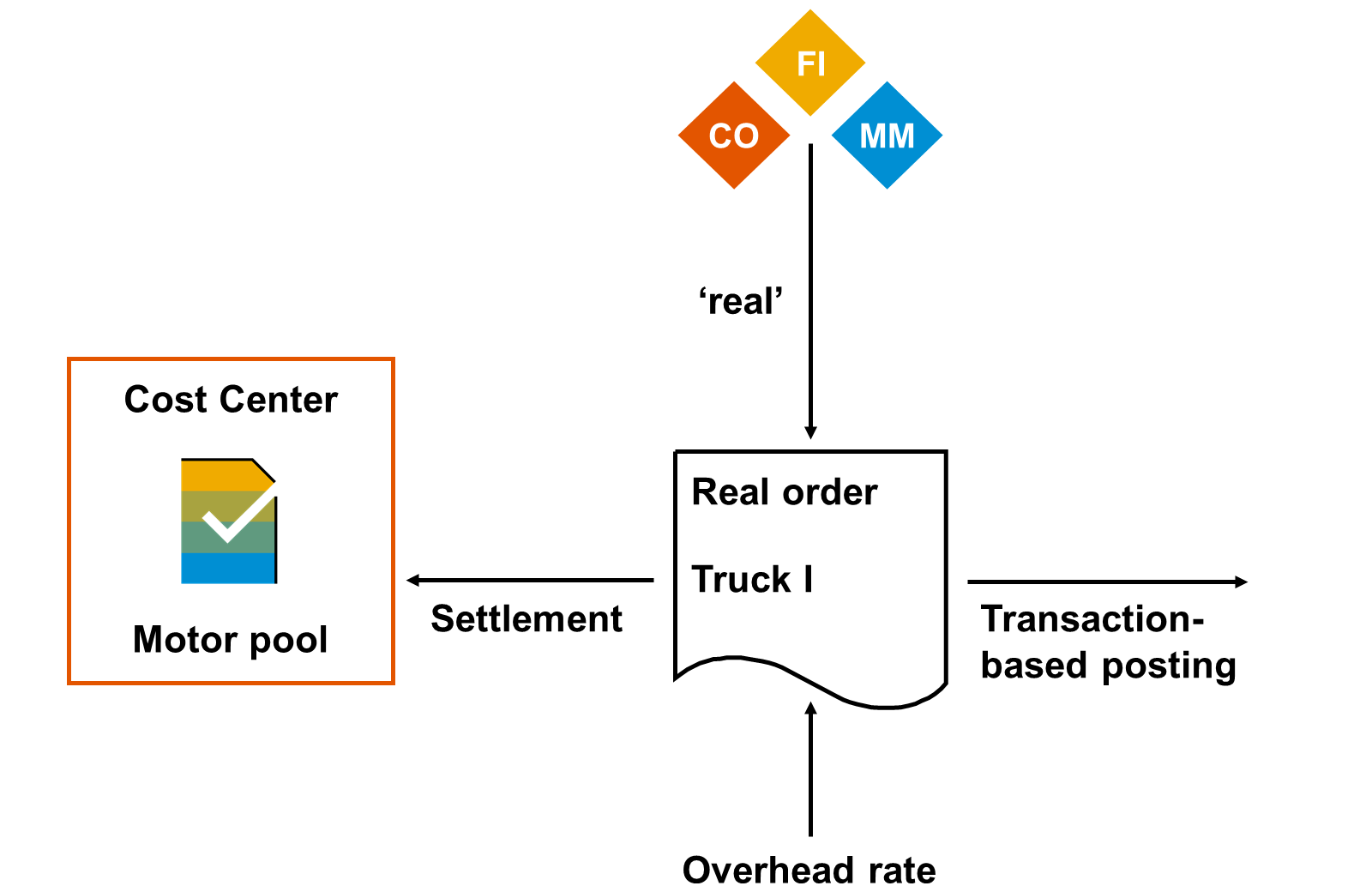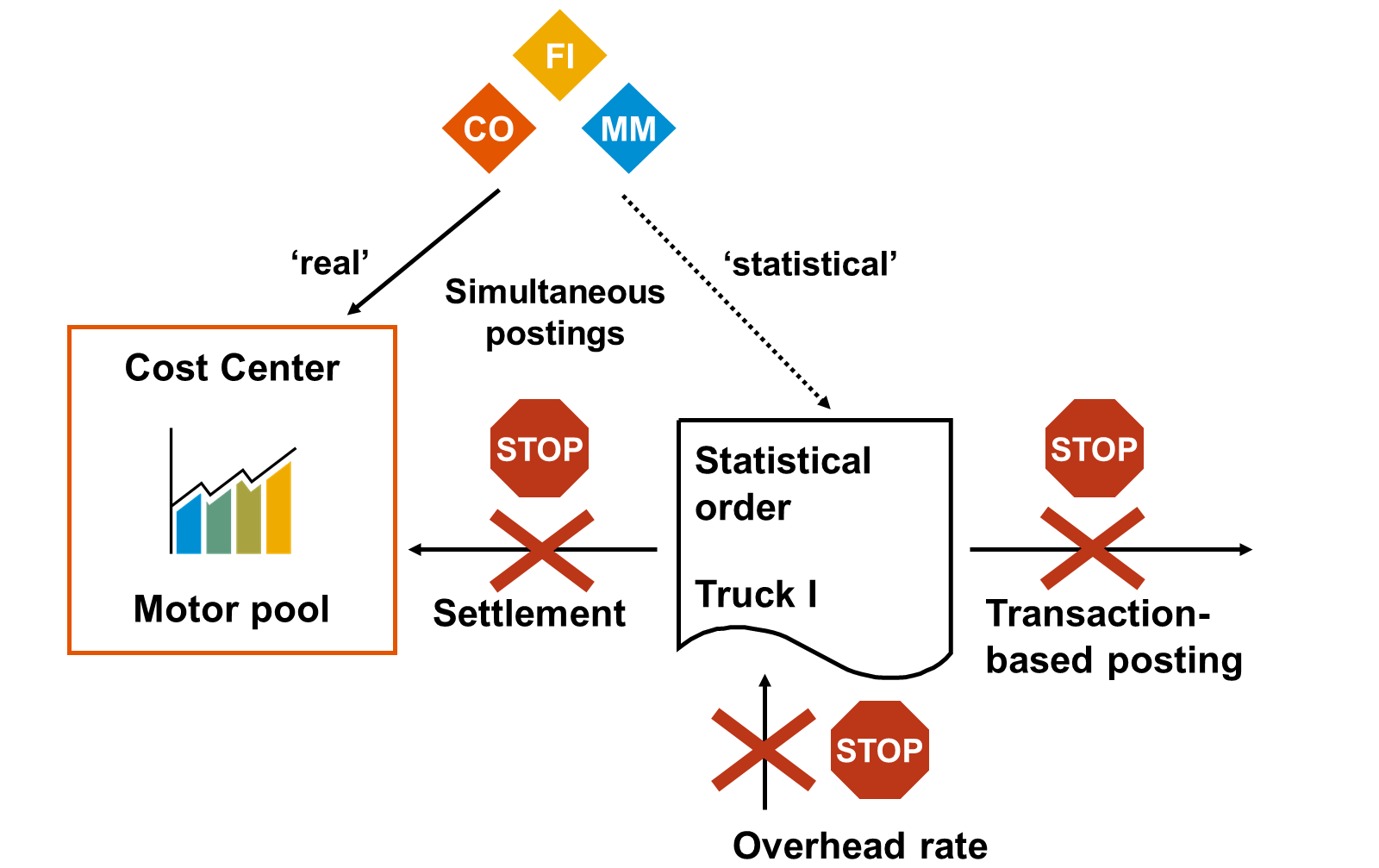
Leveraging advanced ERP solutions like SAP S/4HANA has become imperative for organizations striving to streamline their operations. Interestingly this powerhouse of an ERP extends its capabilities beyond just keeping things running smoothly.
Every business strives to optimize costs, isn’t it? These costs will typically encompass both Capital Expenditures (CAPEX) which are investments in long-term assets like machinery and also include Operational Expenditures (OPEX) which are the ongoing expenses required to keep the business running.
As we understand it, managing these costs effectively requires transparency and control which is precisely what SAP internal orders offer.
Internal Orders in SAP S/4HANA play an important role in cost management for businesses to track, monitor and allocate costs associated with specific projects, activities or campaigns. But more on that later, as we first look at the benefits of making use of SAP S/4HANA for cost management in a quick overview:
- With the in-memory processing of HANA, SAP S/4HANA provides instant insights and actions by gathering and processing live data in real time.
- SAP S/4HANA ERP provides businesses with a centralized view of their financial data which means efficient financial management, error reduction and informed financial decision-making.
- Incorporates machine learning capabilities so that organizations can leverage intelligent automation to reduce errors and optimize operations.
Now let’s delve into the concept of Internal Orders within SAP S/4HANA to uncover their significance with the experts at VC ERP Consulting.
What are Internal Orders?
Internal orders within the SAP S/4HANA Controlling (CO) module are a flexible tool used to track costs (and sometimes revenue) for temporary projects or activities within a company. They are like cost collectors for specific purposes. Unlike cost centers which are permanent parts of the organizational structure, internal orders are temporary and focus on individual projects.
Purpose of Internal Order

Here’s a short analogy to understand the purpose of internal orders. A company participates in trade fairs throughout the year. Previously, all expenses were lumped into the marketing cost center which without a doubt made it difficult to track individual trade fair costs.
Using internal orders for each trade fair can provide clear visibility into actual spending with the help of managing these:
- Maintaining order data.
- Understanding how internal orders function as cost objects.
- Using reports to analyze costs.
- Creating settlement rules and running settlements.
Without internal orders, trade fair costs would be directly posted to the cost center that supports these events. This direct posting would combine external costs (paid to vendors) and internal activities (running the event) under the same cost elements and cost center. This presents issues–
- It’s difficult to see how much each trade fair costs because everything is combined.
- This makes it hard to compare the efficiency and profitability of each event.
SAP Internal Orders are the solution here. Individual tracking of costs is possible by assigning each trade fair a separate internal order. This allows for:
- Easier allocation of costs to the relevant sales cost centers.
- Direct settlement to profitability segments for better profit analysis.
As we touched on previously, internal orders are very important to both CAPEX and OPEX since they track and manage associated expenses. Here, the SAP S/4HANA implementation
Types of Internal Orders
Here are the different types of internal orders a company can create and can be grouped into the following general categories:
Overhead Orders
These orders are used to track and record indirect costs that cannot be directly assigned to a production cost center. An example of an overhead cost order could be used to monitor one-time expenses for activities like trade fairs, maintenance work or the cost of office supplies.
Investment Orders
These orders are used to track and record the costs of fixed assets under construction. For example, a company building a new factory would use an investment order to track the costs of materials and labor.
Accrual Orders
These orders are used to record expenses that have been incurred but not yet invoiced. They are commonly employed for handling pre-calculated costs within the CO module such as accrued interest on a loan.
Orders with Revenue
These orders are used to track the costs associated with orders that will generate revenue for the company. An example of an order can encompass services or other revenue-generating activities outside the core business like renting out unused space.
Internal orders can also be real or statistical. What does it mean?- A real internal order owns any expenses that are posted to it. This means that at the end of the period or at the end of the event, you have to settle this internal order to different cost objects which are mainly cost centers.

Just like the image above shows, here is a possible scenario of how real internal order works:
- A department places an order to use a vehicle from the motor pool cost center as represented by MM or Material Management.
- The system debits the cost center associated with the order and thus records the expense.
- The cost of using the vehicle might be based on a predetermined overhead rate.
- The system tracks the usage data which could be transaction-based posting.
- Eventually there’s a settlement process to reconcile the costs.
- A statistical internal order, on the other hand, doesn’t own any expenses and is there only for reporting purposes. When you post an expense line to a statistical internal order, SAP S/4HANA will ask to insert another cost object with this internal order because it doesn’t own anything and it also means that this statistical order will never be settled to any cost center.
So, statistical internal orders in SAP S/4HANA function by providing a way to track costs for a specific purpose (e.g., projects, products, individual vehicles) on top of the existing cost center tracking.

In this scenario, when a cost is incurred it gets posted in two places:
- Real Posting:
The actual cost is assigned to the relevant cost center (e.g., fuel refill for a company car gets posted to the “Motor Pool” cost center).
- Statistical Posting:
Simultaneously, the same cost is also assigned to the specific internal order created (e.g., the fuel refill gets assigned to the “Car A” internal order) so as to track the individual cost associated with that specific purpose.
Thus, the advantages of “simultaneous posting” are attained, namely, overall cost visibility and detailed cost analysis at the same time.
Now coming back to the original discussion of what role does internal orders play in managing CAPEX and OPEX?
How Internal Orders Within SAP S/4HANA Help Manage CAPEX & OPEX?
With the expertise of VC ERP subject matters, we have established the clear benefits of using internal orders within SAP S/4HANA viz.,
- Clear cost assignment to individual events or projects.
- Easier tracking and comparison of costs between different events.
- Improved cost management and reporting for better decision-making.
Capital Expenditures
When it comes to CAPEX management, internal orders provide a structured approach to track and control capital spending within specific projects or purposes.
- For example, investment orders (one of the types of internal orders discussed above) have a direct application when you create a fixed asset (like a new building). It can be used to track all the expenses incurred during construction which is essential for CAPEX budgeting and reporting.
- Also, internal orders can be used to monitor costs associated with acquiring or upgrading equipment or other assets so as to identify any cost overruns or areas for potential savings during the project.
In conclusion, by creating internal orders for each CAPEX project, defining limits to budgets, tracking spending and leveraging real-time monitoring capabilities, businesses can
- efficiently manage their capital investments
- improve cost management
- make informed decisions
- ensure accurate financial reporting
Operational Expenditures
Regarding OPEX management, internal orders provide granular visibility and control over operating expenses which ultimately allows for better cost monitoring, adherence to budgets and accurate financial reporting.
- For example, overhead internal orders can be used when various operational tasks involve sporadic costs such as trade shows, maintenance endeavors or staff training. These SAP S/4HANA internal orders facilitate the monitoring of actual expenses and their comparison against budgeted amounts.
- In addition, internal orders can be used to allocate costs from temporary projects to the relevant cost centers. For example, if a maintenance project benefits multiple production lines then the total cost can be split and assigned to each line using internal orders.
So this means a more accurate picture of the actual operational costs for each department or activity.
Overall, the gist of using internal orders for CAPEX and OPEX management can be summarized as follows:
Seamless Integration
Because internal orders in SAP S/4HANA can be created for each capital expenditure project assigning unique order numbers, descriptions and linking them to relevant asset master data or project structures.
Budget Adherence
Budget limits for each internal order can be set in SAP S/4HANA to define maximum allowable spending. This consistent exercise aligns budgets with organizational goals, project priorities and financial constraints.
Real time Monitoring
Utilize real-time reporting capabilities of ERP systems like SAP S/4HANA to monitor expenditure against budgeted amounts. Analyze spending patterns, identify cost overruns or deviations and take corrective actions promptly.
Internal Order Settlement in SAP
Settlement which is typically carried out at period-end involves allocating costs to one or multiple receivers with various tracing factors. In basic words, moving costs from a temporary storage area (internal order) to their final destination (cost center, project, etc.).
There are two types of settlements which are:- Internal Settlement and External Settlement.
Internal Settlement
Under SAP S/4HANA, an internal settlement would involve transferring costs from an internal order to a specific cost center within the organization. For instance a company places an internal order to track the costs of building a specific batch of chairs. During settlement, they might allocate the costs like this:
- 60% to the Production Cost Center
- 20% to the Design Department Cost Center
- 20% to the Raw Materials Cost Center
In this example, the costs are moved entirely within the company’s management accounting system and provide a detailed breakdown of expenses across different departments involved in the chair production.
External Settlement
This type of settlement offers more control. External Settlement pertains to the transfer of costs from internal orders to financial accounting objects. These objects typically include assets and general ledger accounts. SAP S/4HANA users can define custom rules to split costs and send them to multiple receivers based on their needs.
External settlement plays a critical role in updating the financial accounting records of the organization so as to ensure that costs are accurately reflected in the company’s financial statements and compliance requirements. This settlement type of SAP S/4HANA internal order settlement helps businesses maintain the integrity of their financial data and facilitates seamless integration between management accounting and financial accounting processes.
So let’s say a furniture company decide to purchase a new delivery truck and place an internal order to track the costs of acquiring the truck. When settling the order, they might allocate the costs as follows:
- 100% to the “Delivery Vehicles Asset Account” which reflects the total cost of the truck and which ultimately becomes a new asset on the company’s financial statements.
Now, concerning cost allocation scenarios within SAP S/4HANA’s financial management framework, there are the following methods for allocating costs from internal orders in SAP S/4HANA namely,
- Basic Settlement
- Extended Settlement
Basic Settlement allows for the straightforward allocation of all costs related to an order to a single cost center or a G/L account under one cost element.
In contrast, Extended Settlement offers a higher degree of flexibility by allowing the customization of settlement rules. A company can split the costs from an order and send them to different cost centers, projects or other receivers (profitability segments).
Summarizing the key differences between Basic vs. Extended Settlements:
| Feature | Basic Settlement | Extended Settlement |
Control Level | Limited | High |
Allocation | All costs to one receiver | Customizable allocation to multiple receivers |
Set-up | Simpler as it requires defining the receiver in order to record | More complex as it requires defining settlement rules |
Suitable for | Simple internal orders | Complex internal orders |
In essence, Basic Settlement is a quick and easy option for straightforward cost allocation. On the other hand, the extended settlement provides more control through settlement parameters defined within the internal order record. These parameters act like instructions that dictate how costs are allocated.
Distribution Rules and Settlement Types
When settling costs to multiple receivers, distribution rules come into play. The distribution rule in SAP specifies how costs from internal orders are allocated to different receivers based on percentage settlement, equivalence numbers or amount settlement.
There are two settlement types to consider for overhead orders including Periodic Settlement which settles costs for a current specific period (gives a clear snapshot of recent spending) and Full Settlement which settles all incurred costs on a sender object up to the settlement period (provides a complete picture).
Documentation and Process Outputs
Whenever there is a settlement of an order, a settlement document is created. During internal order settlement in SAP S/4HANA, each instance of settlement generates a corresponding settlement document along with accounting-related data documents in Financial Accounting (for external settlements) and Controlling (for cost accounting-related data). This document acts like a receipt to track how costs were allocated among different receivers.
Key Takeaways about Internal Orders in SAP S/4HANA
In this article, we have established that internal orders in SAP S/4HANA are powerful tools for Cost Management as they offer increased visibility and control over both Capital Expenditures (CAPEX) and Operational Expenditures (OPEX).
The subject experts of the leading SAP S/4HANA implementation partner VC ERP Consulting presented the following key takeaways:
- Internal Orders act as temporary cost collectors for specific projects, activities or campaigns and provide a clear breakdown of expenses compared to traditional cost center methods.
- Real-time insights from Internal Orders empower businesses to make informed decisions about resource allocation, cost control and project budgeting.
- Internal Orders simplify cost allocation with features like budget adherence monitoring, real-time spending tracking and settlement to relevant cost centers.
- Internal Orders and particularly Investment Orders facilitate tracking and controlling expenses during fixed asset construction or equipment upgrades.
- Overhead Internal Orders provide granular cost visibility for operational activities like trade shows, maintenance and staff training for better monitoring and adherence to budgets.
- Internal Orders offer Internal and External Settlement options for allocating costs to various receivers within the organization or to financial accounting objects.
- Accurate cost allocation through Internal Orders ensures financial statements reflect true spending which improves compliance and reporting accuracy.
VC ERP Consulting: Your SAP S/4HANA Implementation Partner
VC ERP Consulting is your trusted SAP S/4HANA implementation partner and possesses the expertise to help you explore the full potential of Internal Orders for optimized cost management. We offer a comprehensive suite of services to streamline your SAP S/4HANA journey including:
- Digital Transformation Services
- Business Transformation as a Service
- Value & Impact Assessment
- Process Audit & Improvement
- SAP S/4HANA Implementation
- Rollouts & Patch Upgrades
- Localization
- Technical and Data Migration
- Business User Trainings
Contact us today for a free consultation to leverage VC ERP Consulting’s proven expertise in harnessing the power of SAP S/4HANA and gain a significant edge in cost control and financial transparency.







